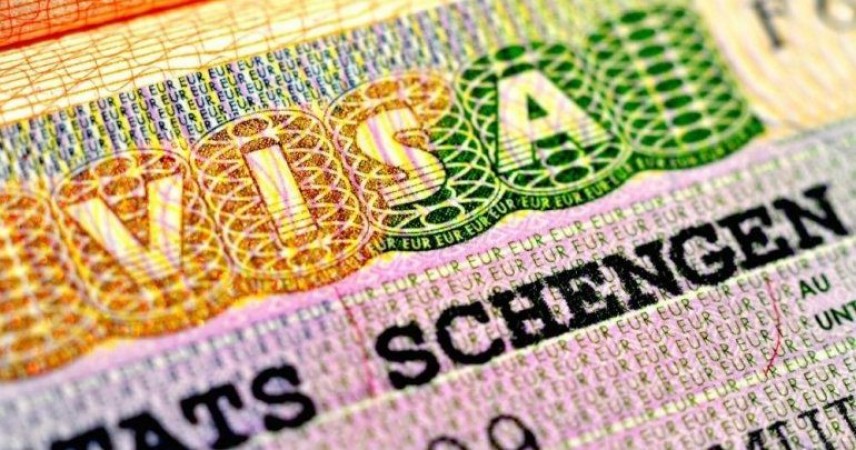
Are you planning an exciting trip to Europe? Exploring the stunning architecture, diverse cultures, and picturesque landscapes that Europe has to offer is a dream for many travelers. If you're a citizen of a non-European Union (EU) or non-European Economic Area (EEA) country, the Schengen visa is your key to unlocking an unforgettable European adventure. In this comprehensive guide, we'll walk you through all the essential details you need to know about the Schengen visa, from its definition to the application process and everything in between.
Schengen Visa
The Schengen visa is a travel document that allows non-EU/EEA citizens to visit Schengen Area countries without the need for multiple visas. This agreement enhances tourism, business, and cultural exchanges by simplifying travel procedures. Named after the Luxembourg village where it was signed, the Schengen Agreement enables seamless border crossings within its member countries.
Advantages of a Schengen Visa
Obtaining a Schengen visa offers numerous benefits. It allows you to explore 26 European countries without the hassle of separate visas for each. This unified approach saves time, money, and administrative efforts. You can immerse yourself in diverse cultures, savor delectable cuisines, and relish historical landmarks with the ease of unrestricted travel.
Countries Covered by the Schengen Agreement
The Schengen Area consists of 22 EU member states and four non-EU countries. These nations have abolished passport and other types of border control at their mutual borders. Notable countries in the Schengen Area include France, Germany, Italy, Spain, and more.
Types of Schengen Visas
There are two primary types of Schengen visas: the Short-Stay Schengen Visa (Type C) and the Long-Stay National Visa (Type D). The former allows stays up to 90 days within a 180-day period for tourism, business, or family visits. The latter is for extended stays, such as work, study, or family reunification.
Eligibility Criteria
To obtain a Schengen visa, you must meet specific eligibility requirements:
Travel Purpose and Itinerary
Clearly state the purpose of your trip and provide a detailed itinerary. Whether it's tourism, business, or visiting relatives, your plans should be transparent.
Financial Means
Demonstrate that you have sufficient funds to cover your travel expenses throughout your stay. This ensures you won't face financial hardships during your time in the Schengen Area.
Travel Insurance
Possess valid travel insurance that covers medical emergencies and repatriation. This is crucial for unexpected situations that may arise during your trip.
Application Process
Applying for a Schengen visa involves several steps:
Gathering Required Documents
Prepare essential documents, including a valid passport, visa application form, passport-sized photos, travel itinerary, proof of accommodation, travel insurance, financial statements, and more.
Applying at the Consulate
Submit your application at the designated consulate or embassy. Schedule an appointment in advance and ensure all required documents are in order.
Booking Visa Appointments
Book a visa appointment through the consulate's online portal. Arrive on time and be prepared for an interview if required.
Schengen Visa Interview
If asked, attend the visa interview at the consulate. Be ready to answer questions about your trip, travel history, and other relevant details. Confidence and honesty are key during this process.
Processing Time and Visa Validity
The processing time for a Schengen visa varies, so apply well in advance. Once approved, the visa's validity depends on the type and purpose of your visit.
Entry and Exit Conditions
Understand the conditions of entry and exit for Schengen countries:
Duration of Stay
Respect the allowed stay duration. Overstaying can lead to fines, deportation, and future travel restrictions.
Multiple vs. Single Entry
Check your visa for details on multiple or single entry. A multiple-entry visa allows you to leave and re-enter the Schengen Area within its validity.
Extending a Schengen Visa
In certain cases, you can extend your Schengen visa while staying within the Schengen Area. Apply for an extension before your current visa expires.
Common Reasons for Visa Rejection
Visa applications can be rejected for various reasons, including insufficient funds, incomplete documentation, lack of travel insurance, and doubts about the purpose of your trip.
Tips for a Smooth Travel Experience
Ensure a hassle-free journey by following these tips:
Plan Your Itinerary
Outline your travel plans to make the most of your time in the Schengen Area.
Know Local Customs
Respect local customs and laws to blend in with the culture and avoid misunderstandings.
Emergency Contacts
Keep a list of emergency contacts handy in case you need assistance during your trip.
Embarking on a journey to the Schengen Area is an exciting opportunity to explore diverse cultures, breathtaking landscapes, and historical marvels. The Schengen visa simplifies travel logistics, allowing you to focus on creating lasting memories. By adhering to the application process, eligibility criteria, and entry regulations, you can make the most of your European adventure. Remember, respecting local customs and laws, planning ahead, and having proper documentation will contribute to a smooth and enjoyable trip.
Gurugram: Section 144 Lifted as Calm Returns after Communal Clashes
Celebrating Freedom: Inspiring Independence Day Quotes and Traditions
Tamil Actor Mohan Tragically found dead on the Streets of Madurai